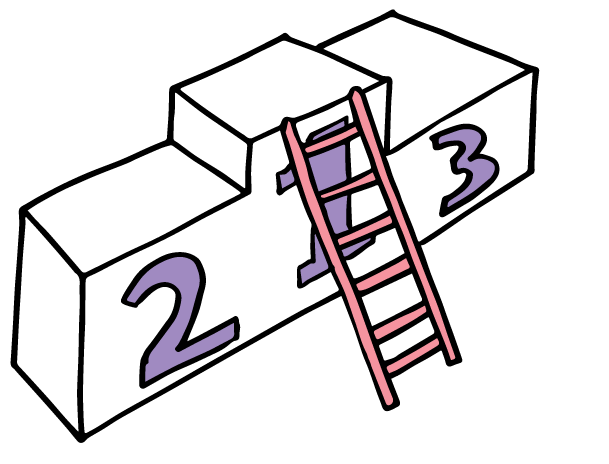
In my latest blog I share a pattern that describes 5 levels of Agile maturity. Agile Leaders can use these insights to create effective, self-organising Scrum teams. If you are a Leader and want to get the best out of your Scrum teams, I have some tips that can help you implement this pattern in your organisation. Have a look at these tips first before you navigate to my blog to explore the maturity pattern:
1. Focus on the people

Understanding Scrum is easy, but implementing it is hard. The Scrum Framework contains 3 artifacts (Product Backlog, Sprint Backlog & Increment), 5 events (Sprint, Sprint Planning, Daily Scrum, Sprint Review & Retrospective) and 3 roles (Product Owner, Scrum Master & Development Team). Many organisations start with the artifacts and events, but do not have enough focus on implementing the roles (typically Scrum Master and Product Owner) as they are intended. The result is often an implementation of Scrum, where all events & artifacts are present, but Scrum doesn't really come to life. As a leader you should have focus on helping the roles Scrum grow. Once the people understand their role, they can take responsibility for the events & artifacts.
Practical Tip: Ask your Product Owners & Scrum Masters what you can do to help them grow in their role
2.Dare to let go

Scrum is designed to address the complexity of the modern, digital age where ever-changing customer demands determine how we structure our organisations. Scrum depends on the ability of teams to learn from mistakes and self-organise around difficult problems. A lot of the traditional leadership responsibilities (such as planning, quality and customer-communication) are needed at the level of the team. For a leader this means letting go of responsibilities and a possible re-definition of the traditional role. This doesn't mean we no longer need managers or leaders, but the role will definitely change. Dependent on a teams' position in the maturity matrix (level 1 to 5) different leadership styles should be applied. As a leader, you should be open to delegate responsibilities and create a plan on how to do so.
Practical Tip: Ask your Scrum Team what incentives could lead to a higher focus on customer value
3. Lead by example

The Scrum values are at the heart of Scrum: Commitment, Focus, Openness, Respect and Courage. Without these values, Scrum will not come to life. The reason why many teams are not showing this behaviour is because they are situated in an often political environment where these values are missing. You cannot expect a Scrum team to act according these values if you do not set the right example yourself. As a leader you need to create a safe environment where these values can flourish and where you continuously set the right example. To give the right example, leaders should play an active part in an Agile transformation (monitoring, guiding and regular evaluations)
Practical Tip: Ask your Scrum teams and fellow-leaders how do they perceive the 5 Scrum values in your organisation
4. Avoid shortcuts

In my blog I describe 5 levels of Agile maturity. Like a child that grows into adulthood, it is not possible to skip one of these levels while growing up. A nice example is Spotify's engineering culture. I encountered a number of organisations who copied Spotify's mechanisms. They replace the role of the Scrum Master by that of an Agile Coach, right from the start. This often results in dysfunctional implementations of Scrum where teams never get the chance to mature. If you've never experienced how to do Scrum by the book, you will never be able to reach the level of maturity of those teams at Spotify. There are no shortcuts in becoming an expert in Scrum.
Practical Tip: If you want fast adoption and growth, hire external expertise and create a setting where people can fail and learn fast
5. Growing in the same pace causes less tension

Each Scrum role will have different challenges in becoming more mature. Many organisations I worked with have a matrix-based structure, where the different roles have a different manager. If these managers are not aligned or use different leadership styles you could end up with a large gap in role-maturity within a team. This can lead to friction and misaligned expectations within a Scrum team. Leaders should create an environment where these roles can work together so they can mature in the same pace. As a leader, make sure that you support the entire Scrum team, so they are not limited by organisational limitations.
Practical Tip: Ask your Scrum team what organisational limitations keeps them from making decisions as a whole
More info
My latest blog gives an overview of the 5-level-maturity-pattern. In a next series of posts I will go more in-depth on how to lead teams from one level to the other.
Engage with me:
 Professional Agile Leadership (PAL-E) training
Professional Agile Leadership (PAL-E) training



